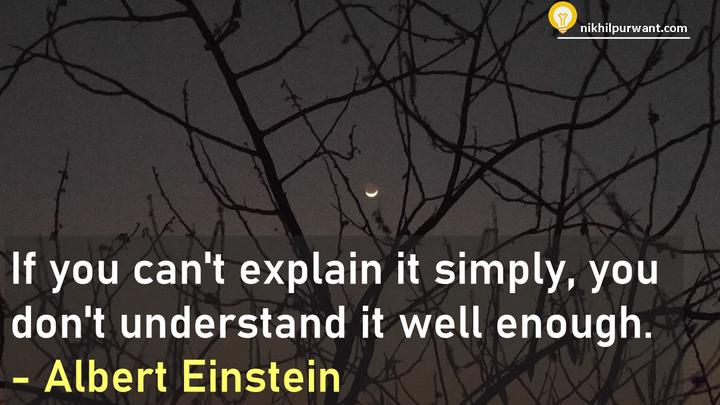25. Strive To Explain Simply

"How will you explain a computer virus to an 80 year old lady?"
this was one of the first interview questions I was asked when I was looking for my first job - as a fresher out of the engineering college.
Later in my career I understood the worth of this question.
Now a days in my free time, I create learning content and whenever I find that I cannot really explain a concept quickly and simply to someone - I go back and try to find, what is preventing me from making the explanation simple.
And more often than not, I stumble upon a new nook or peculiarity that I totally overlooked / misunderstood earlier, which made it difficult to explain the subject at hand simply.
The process of trying to explain something simply forces me to understand it better.
But is it always true that you have to be able to explain something simply to prove (to yourself at least) that you understand it well ?
After all, most ideas (like any “thing” around us) don’t stand alone. They are composed of many other ideas. And a basic minimum level of understanding is needed to begin understanding a higher level concept. So in the case of the interview question we have to assume the 80 year lady understands what a computer is.
And even with the baseline understanding, how do you device a process of explaining anything simply?
I try to use the 80-20 rule. We will talk about the 80-20 rule some other day. But simply put it says - 80% outcomes can be achieved with 20% of the inputs.
So whenever I have to explain a really complex concept to my students or to my team I try to find that 20% information that’ll provide the 80% understanding. And then, I try to explain that 20% information in a way that my listeners can relate to. I’ve found I can use the 80-20 rule to explain things that we encounter in day to day life too. We will see an example of that shortly.
But before that, today’s quote is attributed to Albert Einstein. Again someone who needs no introduction, Considered one of the most intelligent men who ever lived and a Noble prize winner for his services to theoretical physics. And for a man of his stature, to emphasize the importance of explaining things simply - definitely underscores the necessity of doing so.
And now for the picture behind the quote. It’s taken on one of my walks around the hill near where I stay. I am sure many of you have noticed the moon like this. A bright part and a dull part. Making it a full circle. Have you wondered what it is? Here’s another such image of the moon

Well it’s called earthshine. Just like how the moon lights the night on earth (by reflecting sun’s light on to the earth) The dull part on the moon is the earth light on moon - or earth’s light illuminating the moon’s night!
Of course there is more to that than what I just explained. But to put simply it’s earthlight on moon just like the moonlight that we have on earth. This analogy always makes it clearer to me and to whoever I explain it to … because it’s simple and relatable!
So next time when you can’t explain something simply …check if you have overlooked something and you have an opportunity to understand it better !
Thank you for reading through !
-Nikhil